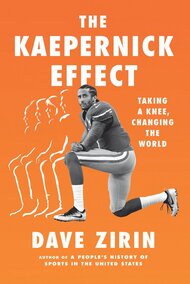Willis Reed Was the Best of New York City

Willis Reed during a game against the Buffalo Braves in Madison Square Garden on October 16, 1973, in New York. (Ross Lewis / Getty Images)
The death of the basketball great should remind the city of what it was, what it is, and what it should resist becoming.
Hall of Fame New York Knicks center Willis Reed died earlier this week at the age of 80. With him, we lost a piece of the city where he became a legend.
Reed was born in Lincoln Parish, La., and later attended college at the famed HBCU Grambling State. But his life and legacy will always exist foremost in the marrow of New York City—a legacy that few can match. Other than Babe Ruth or Joe Namath, there is no athlete in the history of this sports-besotted town who has marked his moment in the skyline’s shadow quite like Willis Reed. He was a tremendous player, named one of the 50 greatest to ever suit up in the National Basketball Association. But his inextricable link to the city goes beyond low-post moves and rebounding statistics.
There are three primary reasons Willis Reed will always be as New York an institution as the Apollo Theater. The most prosaic one is that New York is a basketball-mad town, and the Knicks haven’t won a championship since Reed—alongside Hall of Fame players like Walt Frazier, Dave DeBusschere, and Bill Bradley—led them to two titles in 1970 and ’73 as captain of one of the most storied squads in league history. But since then, bupkis. The Knicks may play at the “world’s most famous arena,” Madison Square Garden, and have a valuation larger than the GDP of many countries, but in the five ensuing decades they have also been a morass of near-misses and mismanagement. After each parched season, the glory of Reed and the teams coached by the great Red Holtzman only grows.
Yet it takes more than championships to build the kind of reverence in which Reed was held in the five boroughs. His iconographic stature stems in part from the time frame of his career, 1964–74, a tremendous and tumultuous era for the city. The New York of 1974 would have been unrecognizable to the city of 1964. Racial resistance and labor uprisings, cultural awakenings and white flight, financial crises and corrupt politicians turned the city on its head, and yet there was Reed: a cultural Rock of Gibraltar during a time of profound upheaval. He was immovable on the court—and a source of pride, even comfort.
And then there was what has come to be known in our culture as the “Willis Reed moment,” when, in game seven of the 1970 NBA Finals, Reed unexpectedly and dramatically appeared on the court against the Los Angeles Lakers with a severely torn muscle in his thigh. His injury had caused him to miss the Knicks’ blowout loss in game six, and hopes were dim. The team had already begun warming up in front of the packed, yet pessimistic, MSG crowd. Even his teammates didn’t expect their captain to take the court, where they last saw him immobile and ailing in the locker room. But as warm-ups continued, Reed slowly but defiantly walked out onto the court, and the crowd burst into a cheer that MSG has not heard since. He faced off against the bigger, taller, and more athletic Wilt Chamberlain, and—as Kurtis Blow wrote years later—“played [defense] with desire.” Just making it onto the court would have created enough energy in the crowd to power the city’s shaky electrical grid. But Reed did more than that. He hit his first two shots—the only shots he would make that game—and became a legend.
As the champagne was poured in the locker room, Howard Cosell, unable to contain himself on national television, said, “You exemplify the very best that the human spirit can offer.”
Reed was New York City of the 1970s: beaten and battered, but always unbowed. Less remembered outside of New York City is the second title the Knicks won in 1973, also against Chamberlain and the Lakers. For that series, Reed limped through nine years’ worth of ailments accumulated by playing through the pain. Yet somehow, for a second time, he was the finals MVP as the Knicks dominated the Lakers, four games to one.
By the next season, Reed was done. His 10-year career was unquestionably cut short by injuries he endured because of his relentless will to play through pain.
While the athletic world, and the city, valorized his ability to compete in a state of agony, Reed resisted that in person. Through his ensuing career as coach and mentor, he was beloved, in part because he stood solidly with the players and their right to play without destroying their bodies in the process.
Willis Reed will never be forgotten. The New York of his glory years seems more distant than when he was still walking among us. This is a city that has always prided itself on being indomitable, and Reed embodied that like no one before or since. In a time of profound change, he forever altered how the city saw itself. To walk in his path means to never surrender the heart and grit that give the city its unique life, especially in the face of its transformation into an offshore luxury shopping mall. As long as this town keeps its calluses, Reed’s memory will be a living one. But to say we aren’t weaker for his absence would be a lie. And Willis Reed was the truth.
More columns ⇒
Support the Work
Please consider making a donation to keep this site going.
Featured Videos
Dave on Democracy Now!

